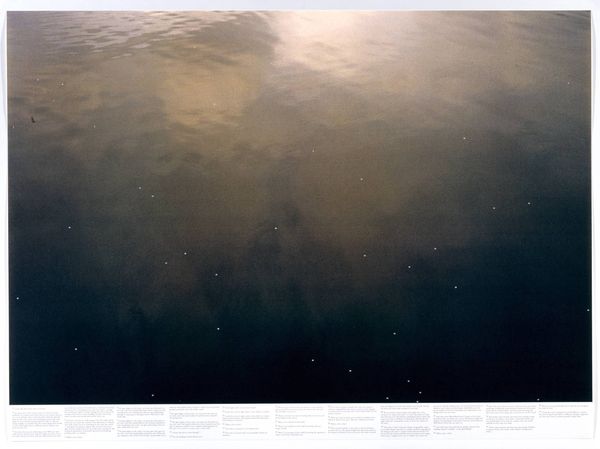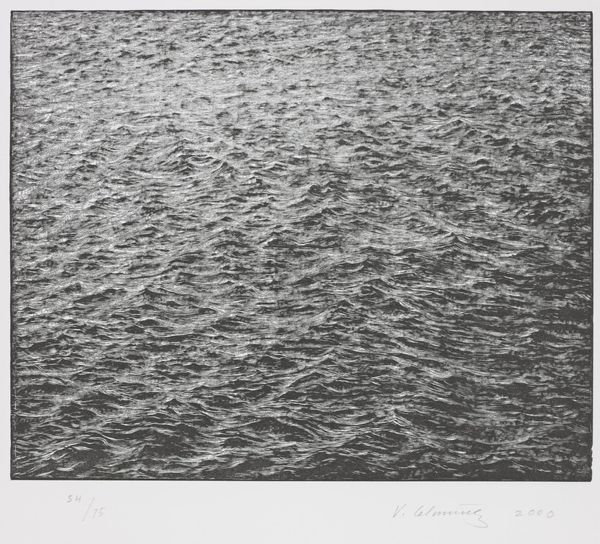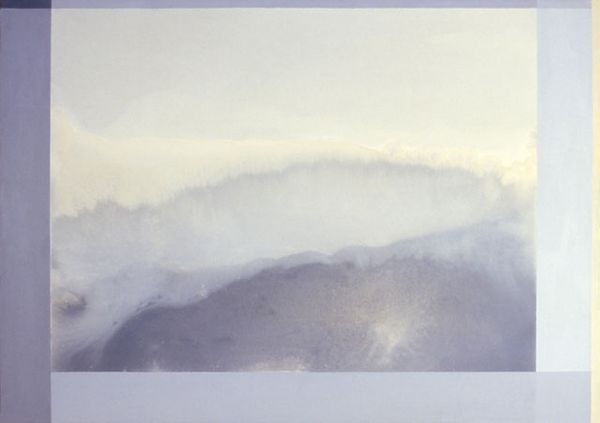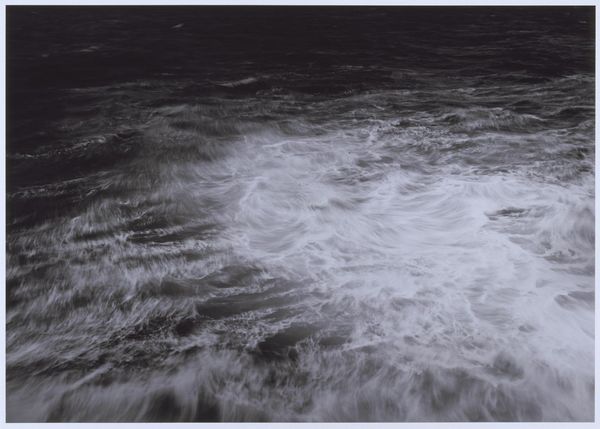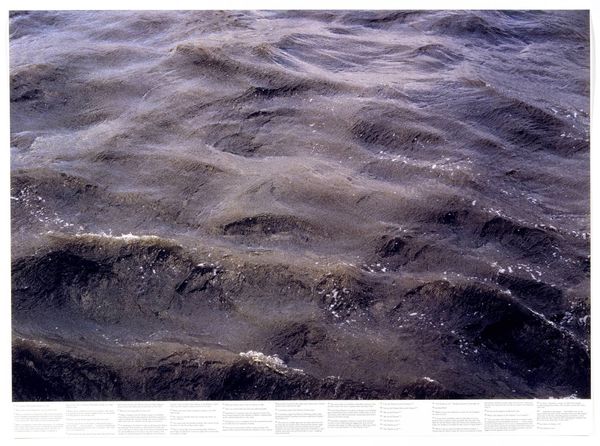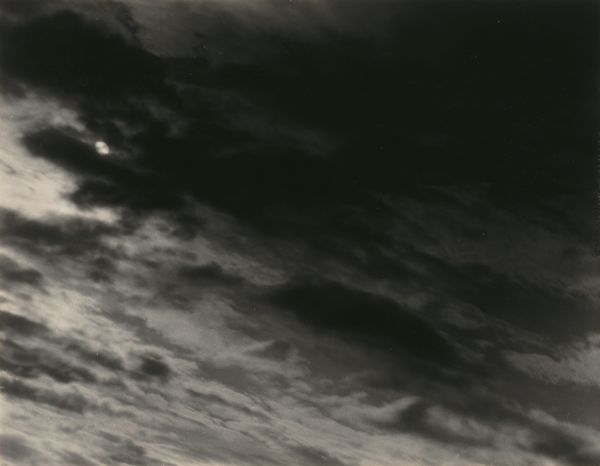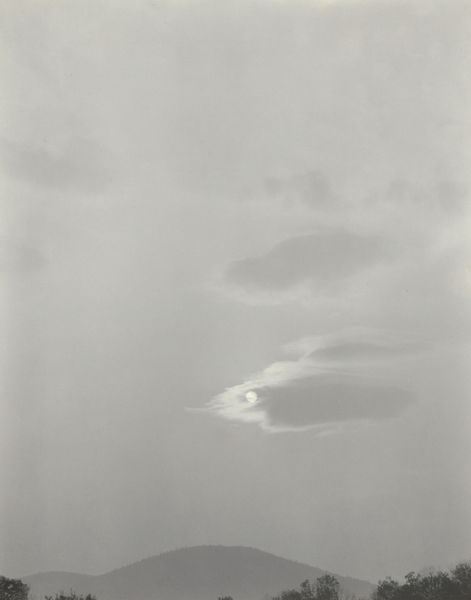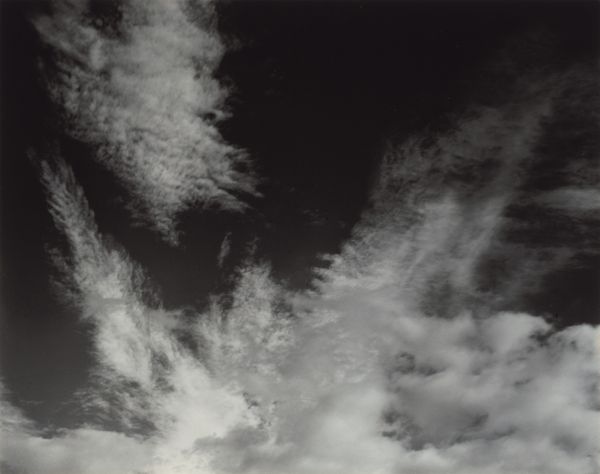![[no title] by Roni Horn](/_next/image?url=https%3A%2F%2Fd2w8kbdekdi1gv.cloudfront.net%2FeyJidWNrZXQiOiAiYXJ0ZXJhLWltYWdlcy1idWNrZXQiLCAia2V5IjogImFydHdvcmtzLzA1MjhlMzFlLWUzMGYtNDNmZC04MjY1LTNlYmUxNDQwODM5Yy8wNTI4ZTMxZS1lMzBmLTQzZmQtODI2NS0zZWJlMTQ0MDgzOWNfZnVsbC5qcGciLCAiZWRpdHMiOiB7InJlc2l6ZSI6IHsid2lkdGgiOiAxOTIwLCAiaGVpZ2h0IjogMTkyMCwgImZpdCI6ICJpbnNpZGUifX19&w=3840&q=75)
Dimensions: image: 770 x 1055 mm frame: 840 x 1120 x 50 mm
Copyright: © Roni Horn, courtesy Hauser & Wirth, London | CC-BY-NC-ND 4.0 DEED, Photo: Tate
Curator: Roni Horn, born in 1955, created this photograph, a stunning study in gradients, titled "[no title]". Editor: It feels melancholic, doesn't it? The shift from light to dark, those scattered points of light, almost like tears. Curator: Observe how Horn uses tonality to create depth. The surface texture and light interplay construct a quiet visual poem. Editor: It's more than just pretty. I read it as a meditation on environmental change, on our tenuous relationship with water. The text at the bottom grounds it. Curator: The text functions as a visual anchor, providing a counterpoint to the fluid, almost ethereal quality of the water's surface. Editor: Exactly! It reminds us that even beauty is contextualized by power and politics. Curator: Indeed. It's a masterclass in understated power. Editor: A potent reminder that art can both soothe and provoke.
Comments
Join the conversation
Join millions of artists and users on Artera today and experience the ultimate creative platform.
tate 6 months ago
⋮
Still Water (The River Thames, for Example) is a series of fifteen large photo-lithographs of water, printed on white paper. Each of the images focuses on a small area of the surface of the river Thames. The colour and texture of these watery surfaces varies dramatically between images: colours range from black to blue and from dark green to khaki-yellow, and in each case the water’s texture is differently augmented by tidal movement and the play of light. Close inspection of the images reveals that tiny numbers in typeface are dotted like specks of flotsam over the water’s surface. These numbers refer to footnotes printed along the lower edge of each image’s white border. The footnotes present a series of musings and quotations on the significance of the river and the moods and narratives it evokes. Tate’s Still Water (The River Thames, for Example) is from an edition of seven.
